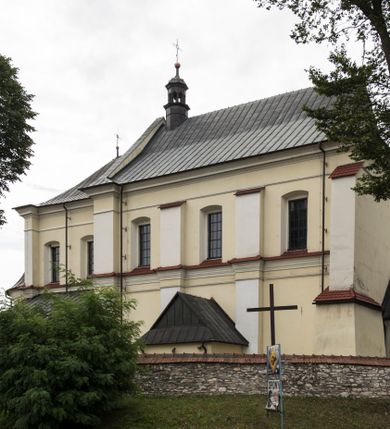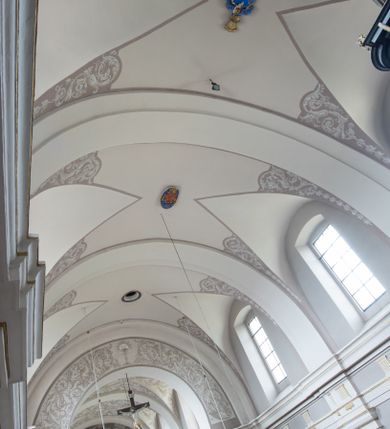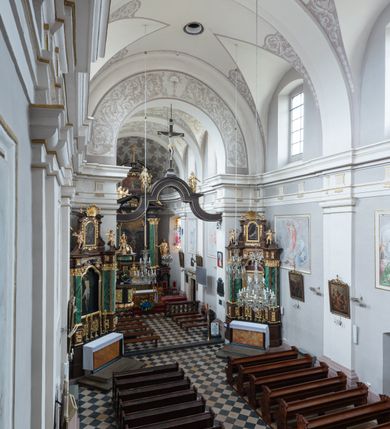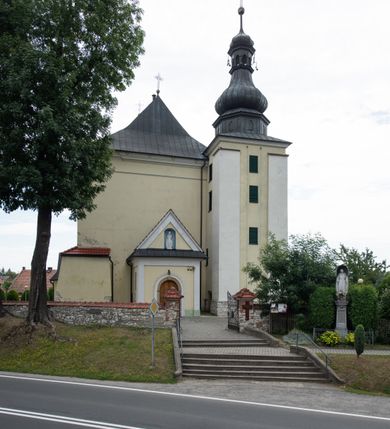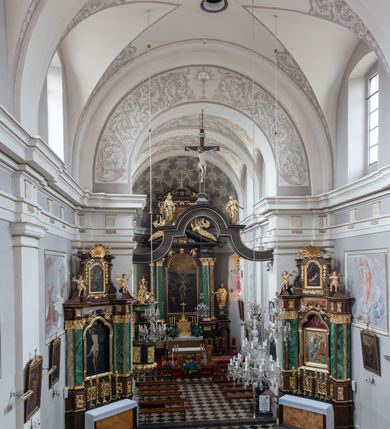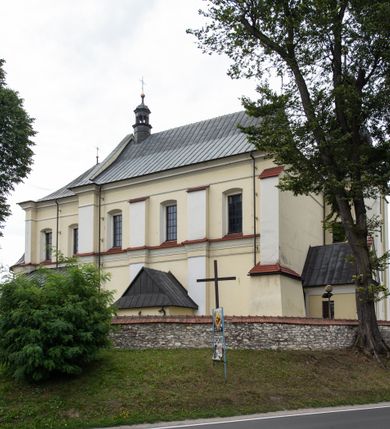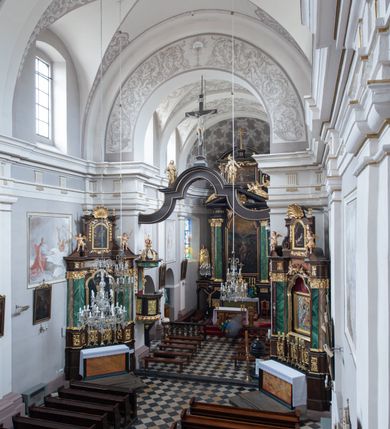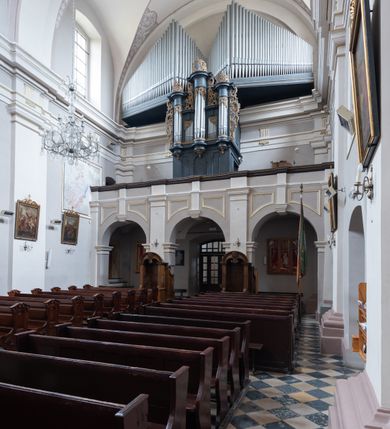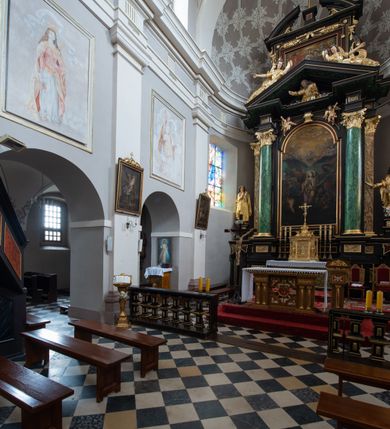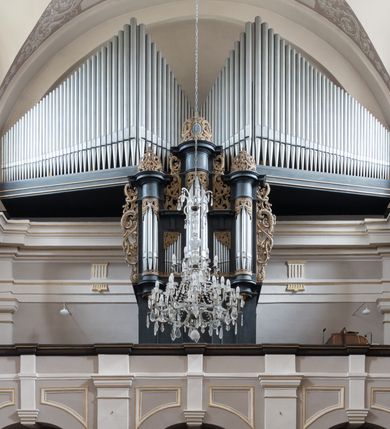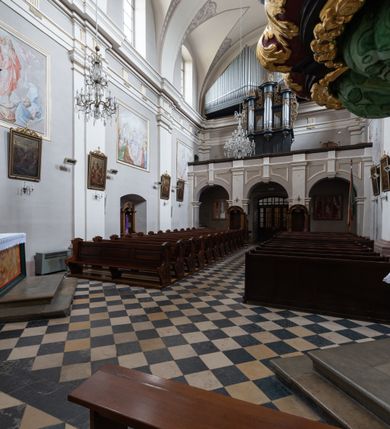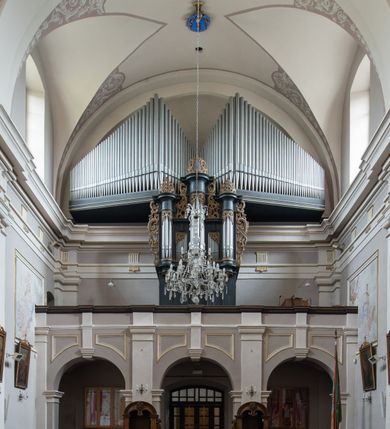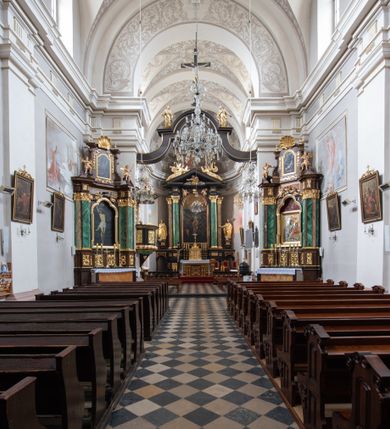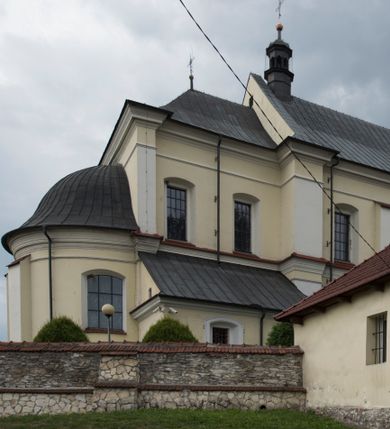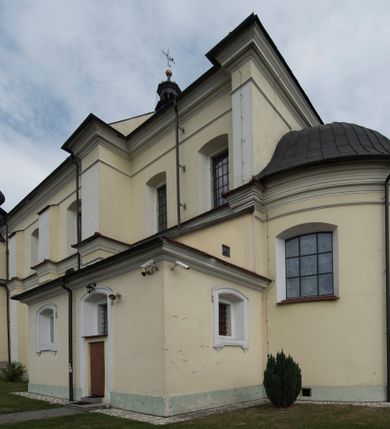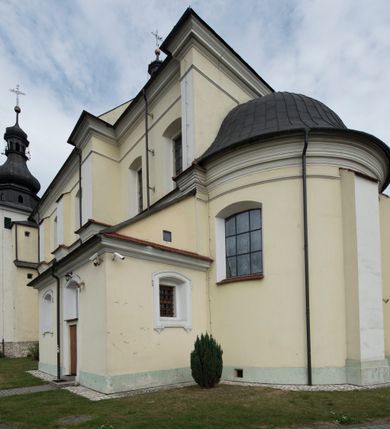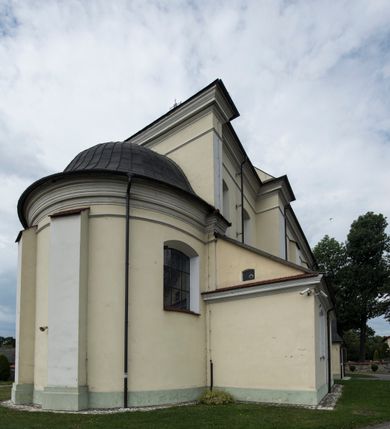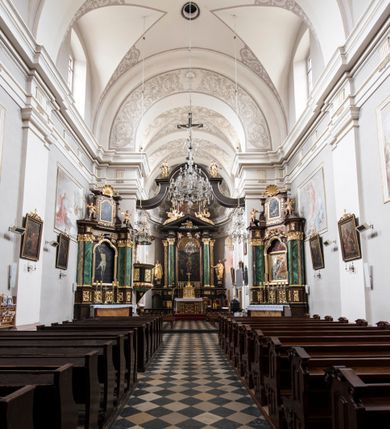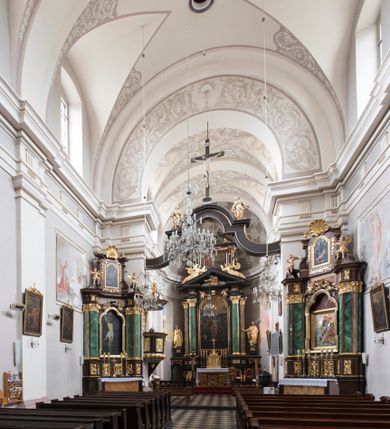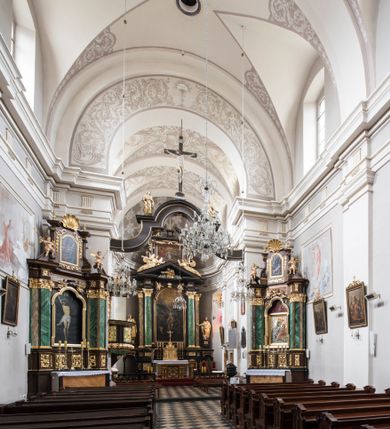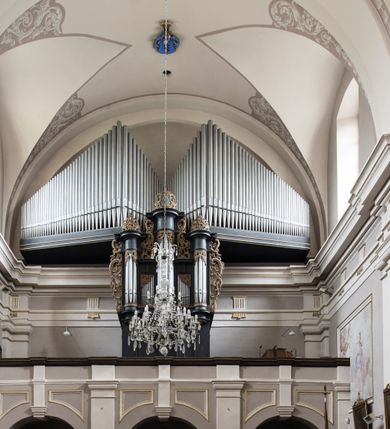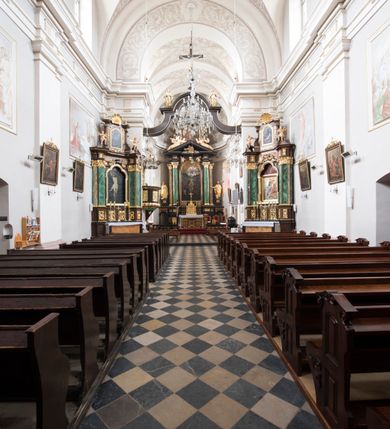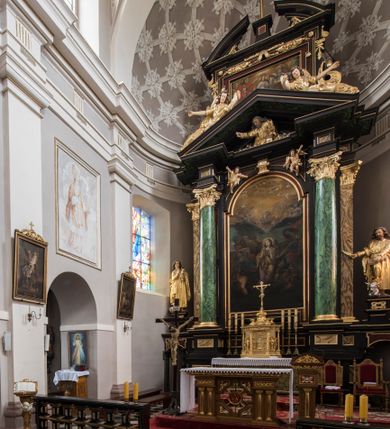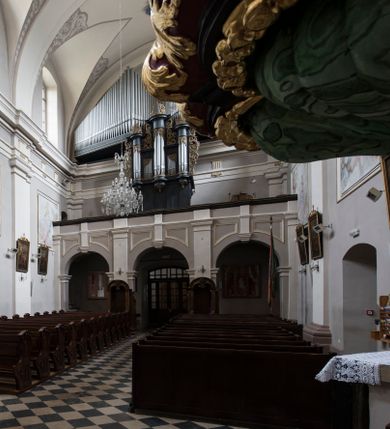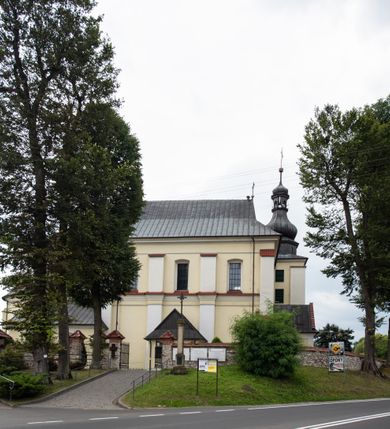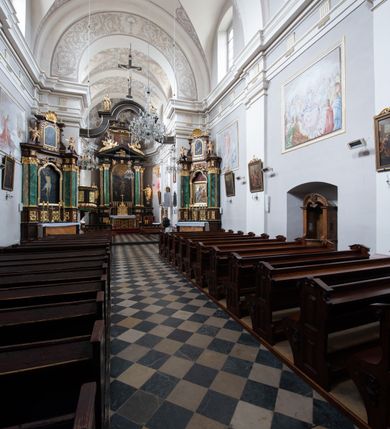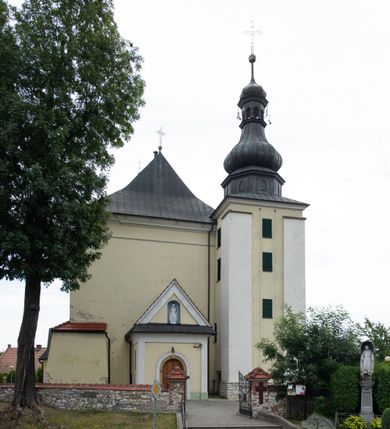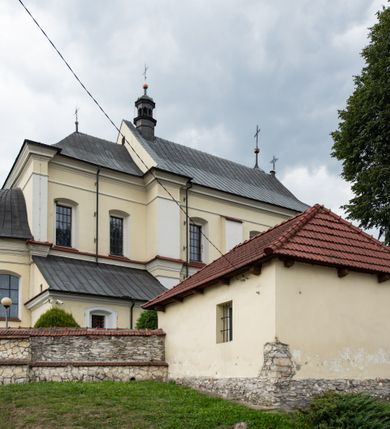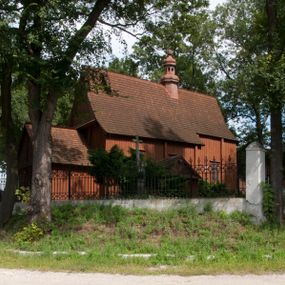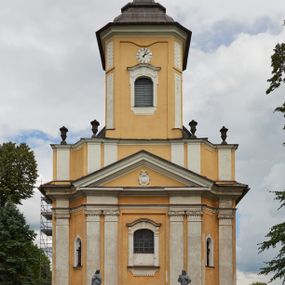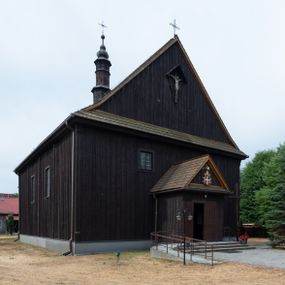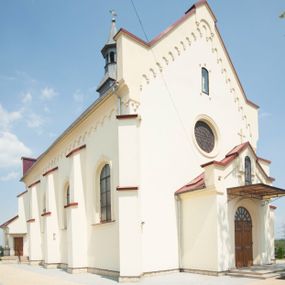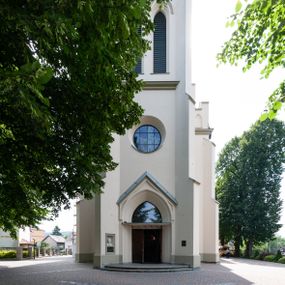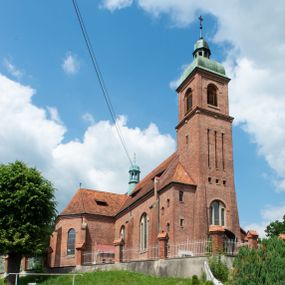
Church of St. Catherine of Alexandria
Identifier
DZIELO/13333
Amount
1
Catalogue note author
Józef Skrabski
History of work
The parish in Spytkowice was established before 1326. From its beginning, there was a wooden church, profanated by Protestants during the Reformation. The construction of the present brick temple began in 1632 on the initiative of bishop Mikołaj Szyszkowski from Warmia and it was completed thanks to Łukasz Opaliński, a chamberlain of Poznań, in 1645. Opaliński funded the high altar erected by Georg Zimmermann, a wood carver from Gdańsk, employed by the Order of Saint Paul the First Hermit in Jasna Góra; his design was probably carried out by iovanni Battista Gisleni. From the very beginning there were two more side altars in the church. These are altars of: Christ Crucified and Virgin Mary. In the Reform Decree of 1663, the temple's roof renovation was ordered as water flooded the interior; at that time, there was no bell tower at the church. In 1670, the church was not fully completed. In 1681, Krzysztof Młynarski from Radocza laid a new roof on the church, in 1695 the roof, and probably the ridge turret for a bell tower were repaired. The temple was consecrated by bishop Mikołaj Oborski on 12 September 1683. Shortly after that date, an organ loft was built, the organ front for which was was bought from the funds of vicar Wojciech Peczonowicz and parish priest Wojciech Ochowski from the Cracovian organ builder - Bartłomiej Juszkiewicz (in 1883, the organ front was replaced with the current instrument). In 1688 the altar of Saint Adalbert was built by Błażej Zawilski from Zembrzyce which finally was located in a separate chapel added from the northern side to the church in 1698. The images of four Doctors of the Church: Grzegorz, Ambroży, Augustyn and Hieronim, painted on the chancel's both in 1710, have not preserved. In 1748, there were four altars in the church comprising: the high altar built by George Zimmermann and two side altars of Jesus Crucified with the painting of St. John of Nepomuk and the altar of Virgin Mary. In the years 1753-1754, both altars were replaced by new reredoses created by Michał Dobkowski - a wood carver from Cracow. It was probably then that a sculptural group on a rood beam was created . It comprised Christ on the cross, assisted by Mary and St. John the Evangelist. In the middle of the 18th century, the temple's furnishings consisted of pulpit (built at the turn of the 17th and 18th centuries), two confessionals and a baptismal font made of Dębnik marble (created after 1644, before 1663). Due to the the total lack of archival records, the history of the church and its condition from the second half of the 18th century up to 1880s remain unknown. The reconstruction of the course of changes in the substance of the historic temple is possible only thanks to the entries in the church chronicle that was initiated by father Michał Zajączek in 1882. Father Zajączek started his chronicle from describing the bad condition of the temple followed by scrupulous recording of his contribution to the restoration of its splendour. He started with the restoration of the main painting (in principle by its repainting) and replacement of the organ front (1882), acquisition of balustrade in front of the great altar (1883), replacement of the floor in the chancel (1886), laying of a new stone floor in the church (1886), restoration of the altar of Virgin Mary (1887) and the purchase of three chandeliers in Vienna (1887). The replacement of the tile roofing with a zinc sheet roofing was a serious undertaking, lasting three years at the church (1889-1892). From the records in the chronicle it is known that there were two new altars in the church at that time. They were created between the second half of the 18th century and before 1882 - dedicated to The Most Sacred Heart of Jesus and St. John (renewed in 1893 and 1995 respectively), nevertheless not preserved until today. Until World War II, the church was maintained in good condition. Immediately after the war, it was covered with new sheet metal and sewage infrastructure was established. In 1970 an accumulation and electric heating system was built and all doors were replaced. A thorough renovation of the temple has been carried out in the last several dozen years (approx. 2002-2018).
Abstract
The Church of Saint Catherine of Alexandria in Spytkowice is a building with modest architectural forms, with a three-bay nave and a two-bay, narrower chancel, with pilaster articulation inside and massive buttresses outside. The total lack of divisions on the facade proves a provincial character of the work. Therefore, its furnishings are contrasted with an impressive high altar from the foundation of Łukasz Opaliński, showing connections with Roman small architecture. It might have been designed by Giovanni Battista Gisleni and made by famous wood carver George Zimmerman in 1645. The side altars in their current form were created in 1753 and 1754, and they were made by Cracovian wood carver Michał Dobkowski. Attention is drawn to paintings: a worshipped painting of the Virgin Mary of Spytkowice on the altar on the right side, a painting of Saint Mary Magdalene (in the iconographic type of Our Lady of the Snows) on the altar finial, the Christ Crucified (which is an unrestrained travesty of famous work of Antoon van Dyck) on the altar on the left side, and a newer painting depicting Jesus falling under the cross with Mary. In the side chapel (built in 1698), currently dedicated to Our Lady of the Rosary, there is an altar originally dedicated to St. Adalbert, created by wood carver Błażej Zawislki of Zembrzyce in 1688. On a rood beam there is a Crucifixion Group, possibly created by Michał Dobkowski. The church's furnishings also include a pulpit built at the turn of the 17th and 18th centuries, and a baptismal font, made of Dębnik marble, brought from Dębnik, near Cracow, before 1663.
Persons related to work
Other works from this place
Similar works
By title
By category
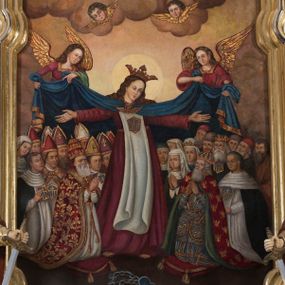
Our Lady of the Redemption of Slaves
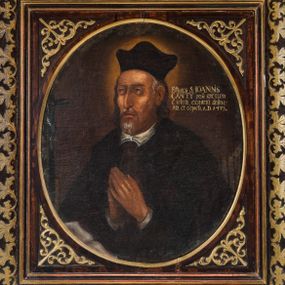
St. John Cantius
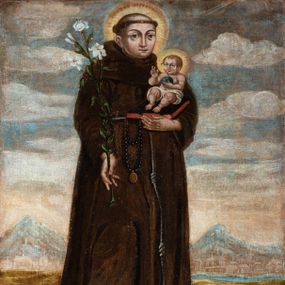
St. Anthony of Padua
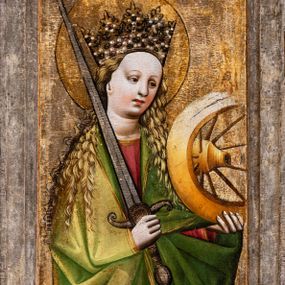
A front left wing of the old triptych of Our Lady of the Immaculate Conception
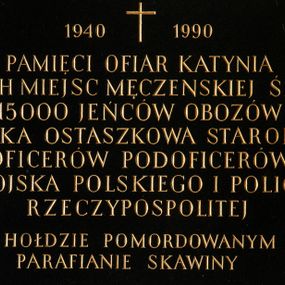
A plaque commemorating the victims of extermination
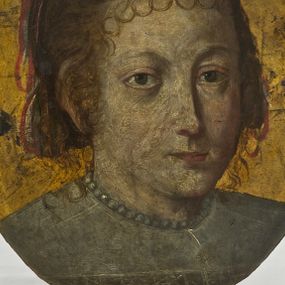
A portrait of Zofia Kochańska of the Swierczewski family
How to cite?
Józef Skrabski, "Church of St. Catherine of Alexandria", [in:] "The Sacred Lesser Poland Heritage", 2026, source: https://sdm.upjp2.edu.pl/en/works/church-of-st-catherine-of-alexandria
